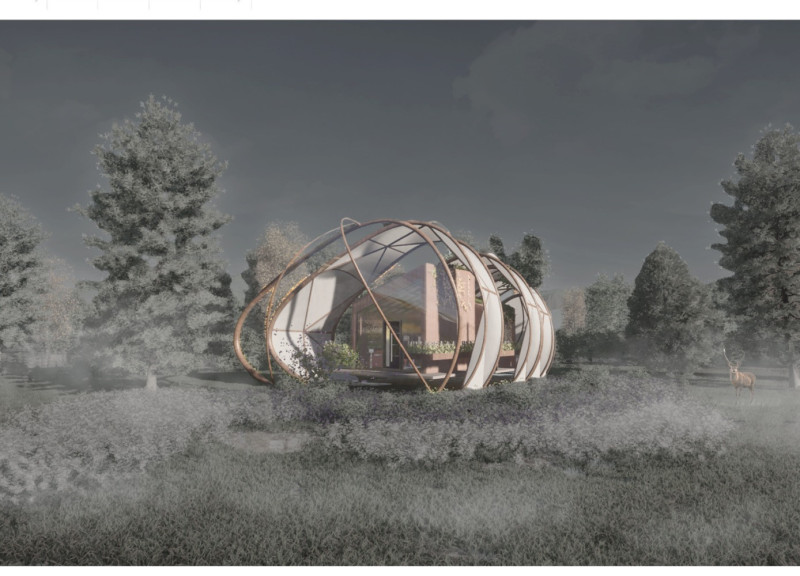5 key facts about this project
The Cocoon is a flexible microhome located in Upstate New York, designed as a holiday retreat for a family of three. Its key concept revolves around adaptability, allowing the home to respond effectively to seasonal changes. The design emphasizes a dual-layer enclosure that enhances the connection between indoor and outdoor spaces while prioritizing functionality.
Adaptive Design
The exterior of the Cocoon features a light steel frame structure complemented by ETFE panels. This design allows the house to change its layout through a sliding mechanism, adapting to various weather conditions. By enabling adjustments to the home’s shape, this approach enhances its usability throughout the year. The fluid nature of the exterior fosters a strong connection to the natural surroundings.
Sustainable Core
At the center of the Cocoon is a wooden cabin that serves as the main living space. This inner core includes sustainable features such as solar panels and a rainwater collection system, focusing on energy efficiency and environmentally friendly practices. The materials selected for this space prioritize durability and sustainability, contributing to the overall efficiency of the home.
Seasonal Adaptability
The architecture of the Cocoon responds well to changes in the seasons. In the summer, the outer shell can open to allow fresh air and sunlight to enter, creating a semi-outdoor space that enhances overall comfort. In winter, the structure closes to form a greenhouse effect, which boosts insulation and keeps the interior warm in cold temperatures.
Elevated Living Space
The design includes an elevated living area, achieved through a cable-stayed structure that lifts the cabin off the ground. This thoughtful element reduces the risks associated with flooding and helps protect against pests and snow. Elevating the cabin ensures that the microhome remains practical and comfortable, even in difficult weather conditions.
Each of these components comes together to create a well-rounded living space that invites nature inside while providing a versatile shelter. The careful balance of function and design makes the Cocoon a noteworthy example of contemporary residential architecture.



















































